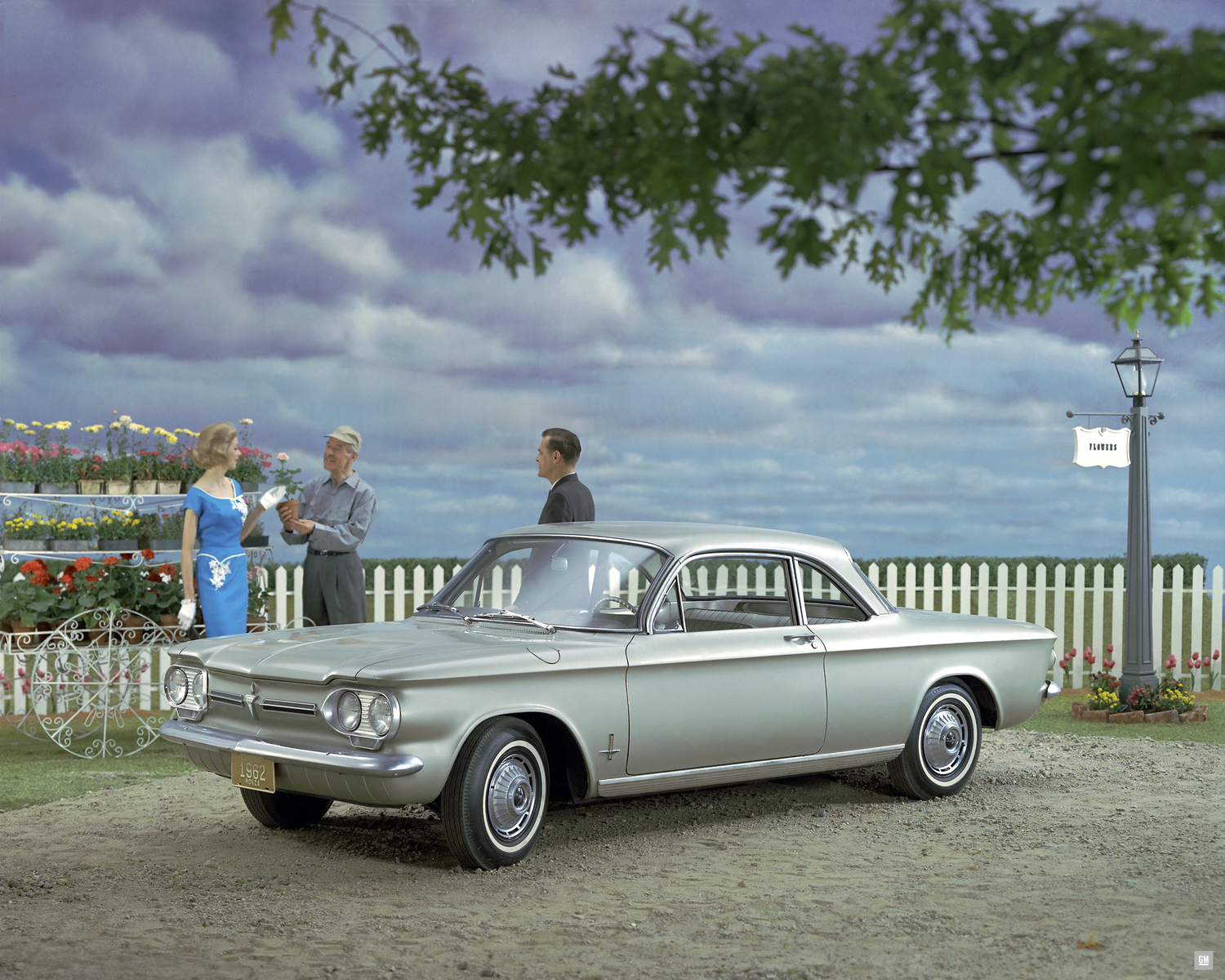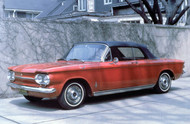Classic Car History: The Corvair
Posted by Jil McIntosh on Sep 9th 2020
There are a few cars that became known for all the wrong reasons, and that was definitely the case with the Chevrolet Corvair. It will always be tied to Ralph Nader’s book Unsafe at any Speed, but contrary to popular opinion today, it didn’t really play all that major a role in the car’s lifespan.
Automakers built land yachts in the 1950s, and many drivers hated parking and filling these oversized beasts. So when 1960 rolled around, they could opt for all-new compacts from the Big Three: Ford’s Falcon, Chrysler Corporation’s Valiant, and the Corvair.
The first two were conventionally-powered cars, but of course, the Corvair was not. Its design was driven by Ed Cole, Chevy’s chief engineer at the time, who wanted it to be easy to drive, and spacious inside. He thought putting the engine’s weight at the rear would create lighter steering and better braking, and eliminate the need for a space-hungry driveshaft tunnel. An air-cooled engine would make the car lighter since it didn’t need a radiator.

The Corvair rode on a 108-inch wheelbase with 13-inch wheels and used a 140-cubic-inch, horizontally-opposed six-cylinder that made 80 horsepower. It was available in the Standard Series 500, Deluxe Series 700, and Monza Series 900, ranging from $1,984 to $2,238. That got you a three-speed manual transmission, but most paid the extra $146 for an automatic.
Ford took the compact crown that first year, selling 435,676 Falcons. Corvair sold 250,007 copies, and Valiant hit 194,000. Ford won that popularity contest annually until 1965. Corvair topped Falcon that year, but the all-new Mustang outsold those two combined.
Corvair added a station wagon for 1961, and for 1962, two new convertibles: Monza and Monza Spyder, the latter with a 150-horsepower turbocharged flat-six engine.
The second-generation Corvair arrived for 1965. It was now longer, lower, and wider, and with a base-engine bump to 95 horses. Trim lines were the entry-level 500, mid-range Monza, and top-line Corvair Corsa, with a 140-horsepower engine. Under all of them was a new, fully-independent suspension with four coil springs, replacing the old swing axle with transverse leaf spring.
That swing-axle suspension formed the core of the controversy. Critics claimed that on uneven ground or hard curves, a rear-wheel could “tuck under” and increase the risk of a rollover.
Nader’s book referenced a woman who lost her arm in a crash with her 1961 Corvair. The resulting lawsuit was the first court case where a vehicle’s design was taken into consideration. For stability, GM set tire pressures of 15 psi front and 26 psi rear, an unheard-of maintenance requirement on an everyday, mass-market vehicle. The trial abruptly ended halfway through when GM settled with the plaintiff for $7,000.
Auto reviewers noted the car’s tendency to oversteer, and while Car and Driver reviewed the improved 1965 model in a positive light, in the same story it also called the original design “one of the nastiest-handling cars ever built.”
So did Nader kill the Corvair? He didn’t help it, but he didn’t single-handedly send it to its grave either. Many people who haven’t read the book think it’s entirely about the car, but that’s only the first chapter. It was an overall criticism of automobile and road safety, including the role of governments and insurance companies. Ultimately, it led to the creation of NHTSA, the National Highway Traffic Safety Administration.

The redesigned 1965 Corvair went on sale on September 24, 1964. Unsafe at any Speed arrived more than a year later, on November 30, 1965.
The book likely had far less impact than the Chevelle, introduced for 1964, and an instant sales success. The redesigned Corvair’s most powerful engine made 140 horses, while Chevelle offered V-8s from 195 to 375 horses. Corvair sold 235,500 copies in 1965, but Chevelle topped it by more than 162,000 units. It was just too costly to engineer the Corvair for a bigger engine, and GM was already pulling cash away from it and stuffing it into the upcoming Camaro.
It’s believed the original plan was to drop the Corvair when the Camaro debuted in 1967. But there were still more than 100 lawsuits before the courts over Corvair crashes – almost all from before the book’s publication – and it might not look good to judges and juries to discontinue the car during them.
For 1969, the final year, Chevrolet built the Corvair five-passenger coupe; the Monza four-passenger coupe; and rarest of all, 521 copies of the Monza convertible.
Here are some other interesting tidbits about the Corvair…
- Ralph Nader only owned one car, a 1949 Studebaker he drove to law school. Someone later donated a Corvair to the law museum he founded, but Nader only brokered its sale on the museum’s behalf, and never actually owned it.
- According to Ed Cole, who headed the Corvair’s development, the name was a combination of Corvette and Bel Air.
- The Monza was a show car that got enough response to go into production. It was based on the Deluxe 700 coupe and added bucket seats with leather-look vinyl, folding rear seat, chrome trim, rear ashtrays, glove box light, and unique wheel covers.
- Starting in 1961, the Corvair’s rear-engine design was used for the Corvair 95 passenger van, panel truck, and pickup truck. They lasted until 1964 and weren’t continued when the Corvair was redesigned for 1965.
The Corvair’s notoriety no doubt adds to its popularity, but it’s an interesting collector car beyond all that. The rarer convertibles generate the most attention, but all models draw crowds at shows. It’s still easy to get parts for their restoration, making them even more desirable for enthusiasts.
Are you having trouble finding classic Corvair parts? If you are restoring an old Corvair, finding Corvair parts is easy. Collectors Auto Supply has thousands of car restoration parts and automotive restoration supplies. Check out our home page to begin your search.

